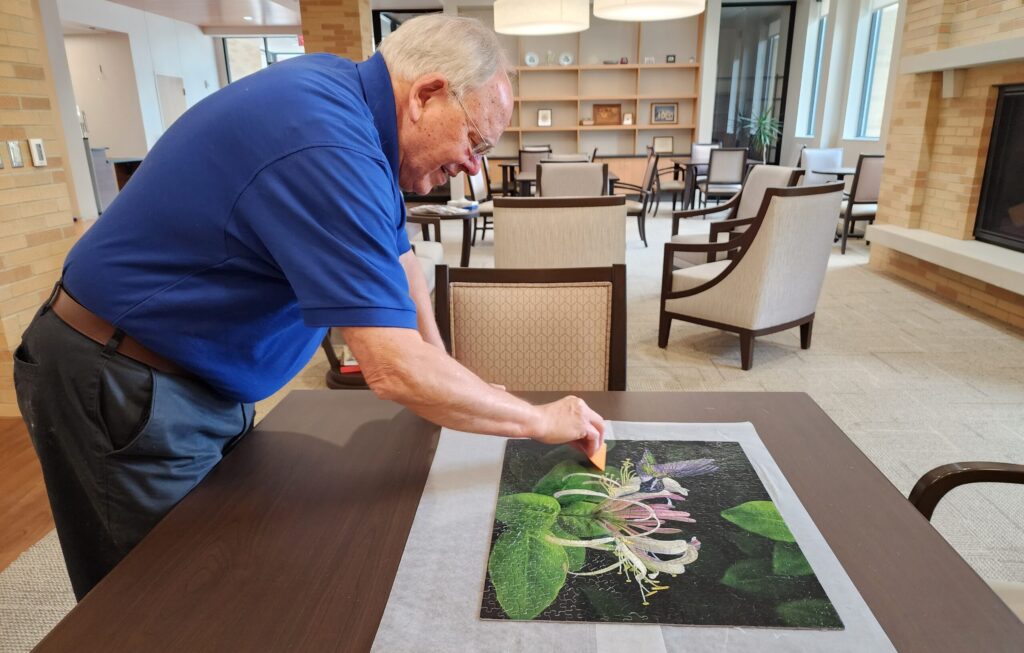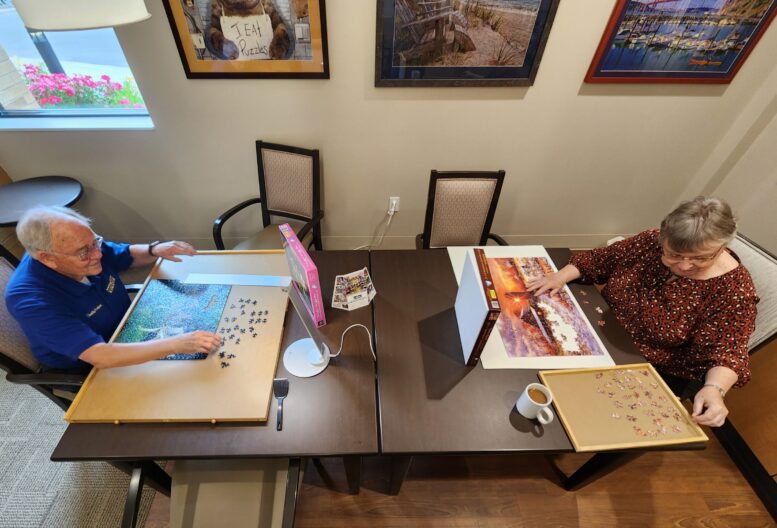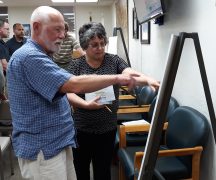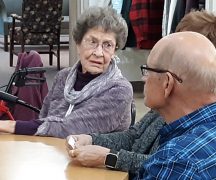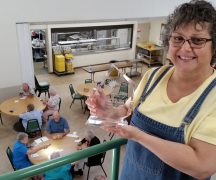By JAN LARSON McLAUGHLIN
BG Independent News
There’s a corner in the Wood County Senior Center lounge where puzzlers piece together masterpieces.
One morning last week, it was Charlie Harper and Mary Hansen plodding away at a couple tedious jigsaw puzzles.
“We’re trying to beat each other,” Harper said with a grin.
“I’m the boss, he can’t deny it,” Hansen responded with a giggle.
While some find puzzles tedious and tiresome, others find them relaxing and rewarding.
It takes a particular type of person to wrangle odd shaped cardboard pieces into the finished product, according to Harper, who has a doctorate in zoology and worked as an environmental specialist with an engineering construction company.
“Not everybody can do a jigsaw puzzle,” he said. To be successful, puzzlers must have an absolutely accurate sense of color and spatial awareness.
“The few of us who have those gene combinations find it to be very relaxing,” Harper said.
There’s a steady group of eight to 10 seniors who gather around the tables in the corner each day and toil over the puzzle pieces – with the pictures on the box covers providing inspiration.
The diehard puzzlers (who soundly reject the nickname puzzle posse) spend hours solving the mysteries before them.
Others are content to briefly grace the puzzle tables.
“Some people will put one piece of the puzzle in, and then off they go,” said Hansen, a retired vehicle aide with Wood Lane.
“Anybody can help,” she said. “There’s no ownership.”
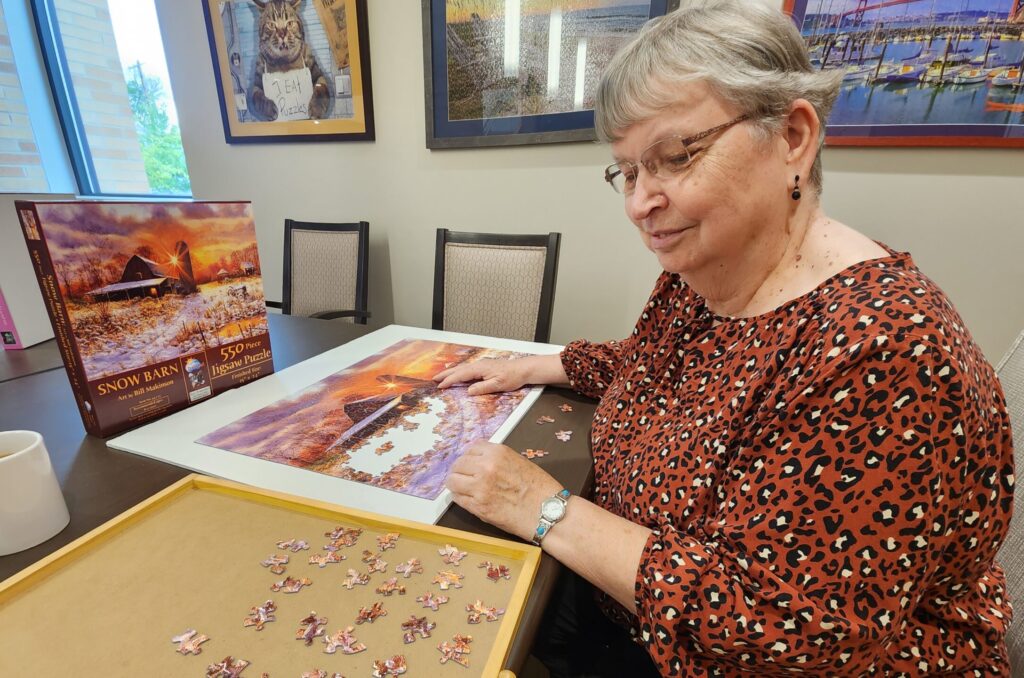
True puzzle people are content to spend hours, days on a puzzle. There are several variables to consider. A 300-piece may take a couple hours. A puzzle with a lot of pure black areas may take more than a week. And puzzles with 1,000, 2,000 or 3,000 pieces may seem never ending.
But that’s OK with this crowd.
“We’re not here with a deadline,” Harper said.
The large 2,000-piece Statue of Liberty puzzle took nearly a month to complete, and another complex puzzle of a water mill in a wooded scene pushed some puzzlers to impolite language.
“I heard a lot of bad words, but it turned out beautifully,” said John Blinn, who is an occasional puzzle person at the senior center.
“A puzzler never gives up,” Blinn said. But even the most patient person can at times get perturbed, he added. “When you get almost done and it’s missing a piece,” it’s enough to make puzzlers want to pull out their hair.
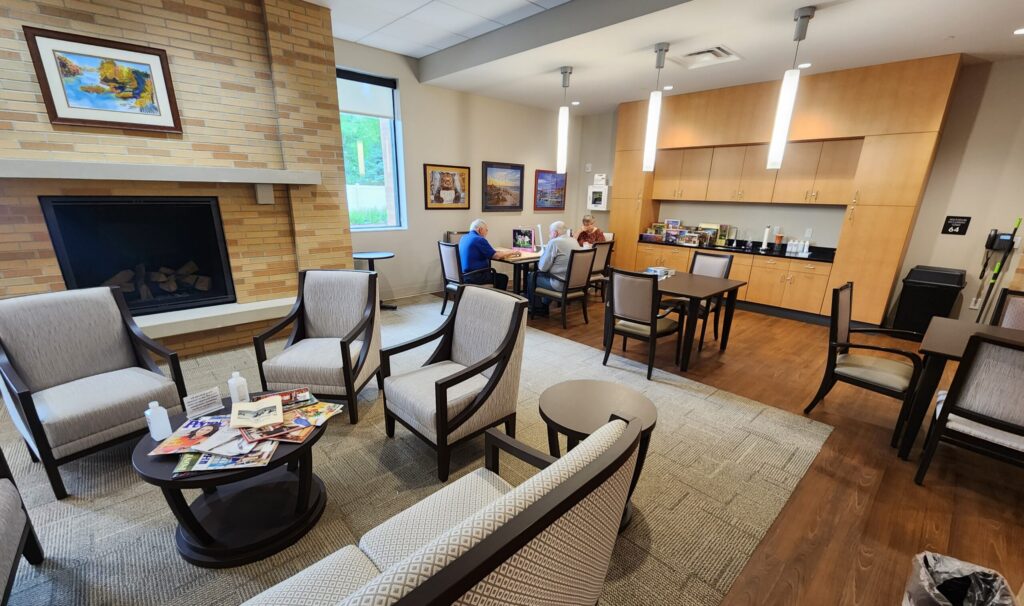
The senior center has been graced with several donated puzzles that sit on the counter near the puzzle corner. They are just waiting for someone to tackle at the senior center, to take home, or to swap for another puzzle.
Puzzling is proven to be good for brains.
“It keeps your mind active,” Hansen said. “So you’re not sitting in a chair falling asleep in the afternoon.”
And the conversations over puzzling tend to be engaging. Harper said he and Blinn often solve the challenges of world peace and hunger – but stay far away from discussing politics.
However, there is a controversy stirring among the puzzle crowd at the senior center. For a period after the new facility in Bowling Green opened, some of the center’s big expanses of white walls were adorned with finished puzzles that had been glued and framed.
“There are a lot of blank walls around here,” Harper said.
But some at the senior center would prefer that “real” art be displayed on the walls.
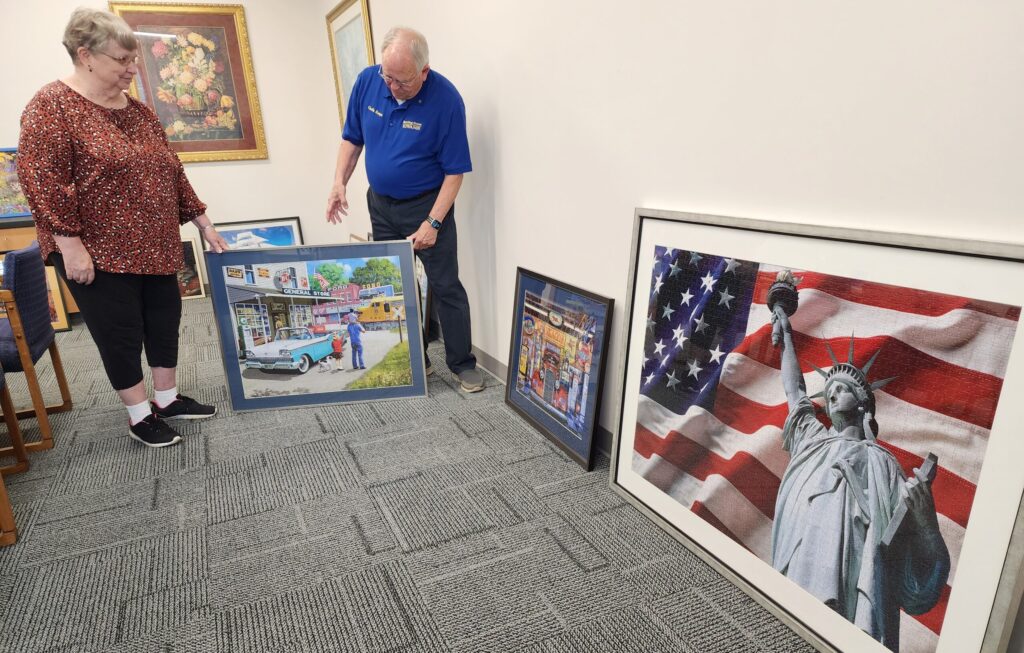
So most of the framed puzzles have been removed from display and now lean up against the walls in an upstairs room at the center. Many portray places that many seniors would have visited – the beach, an old gas station, or the Golden Gate Bridge. There are patriotic puzzles and heartwarming scenes of children flying kites, flowers blowing in the wind, and birds perched on branches.
“It’s become a cottage industry,” Blinn said of the completed and framed puzzles. He challenged the theory that puzzles aren’t art. “You get back five or six feet, and most people don’t know it’s a puzzle.”
Meanwhile, tucked in the corner of the senior center lounge, the puzzlers persist.
Hansen searches for the perfect pieces to finish the barn in the snowy sunset scene, and Harper sticks with the dark areas in the puzzle picturing a hummingbird with honeysuckle. When Harper finished, he spread glue on the front surface of the puzzle, preparing it for framing – to be hung on the wall or lean against a wall.
He could have finished sooner, he tells Hansen, but he had to solve some more world crises with Blinn.
